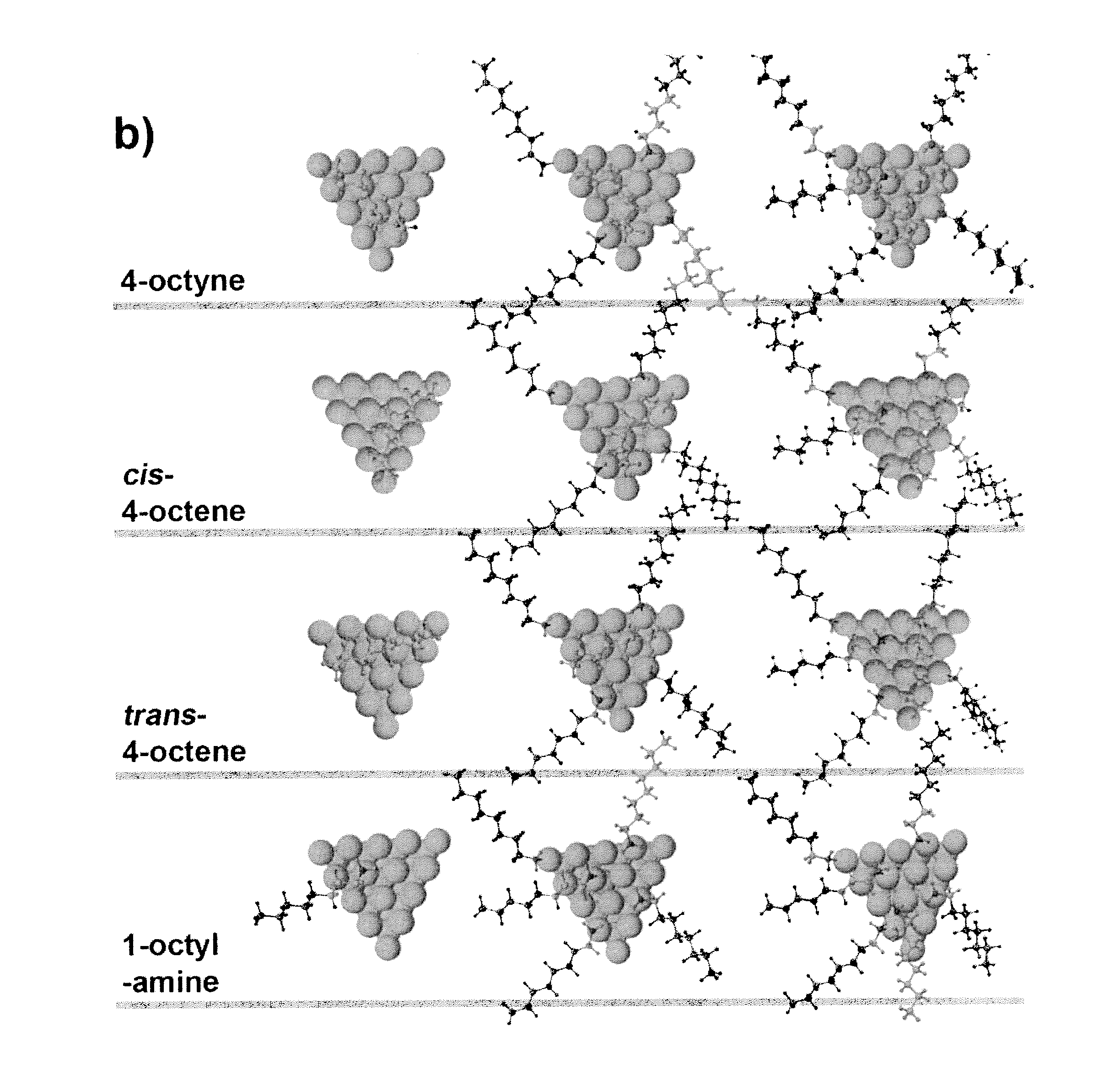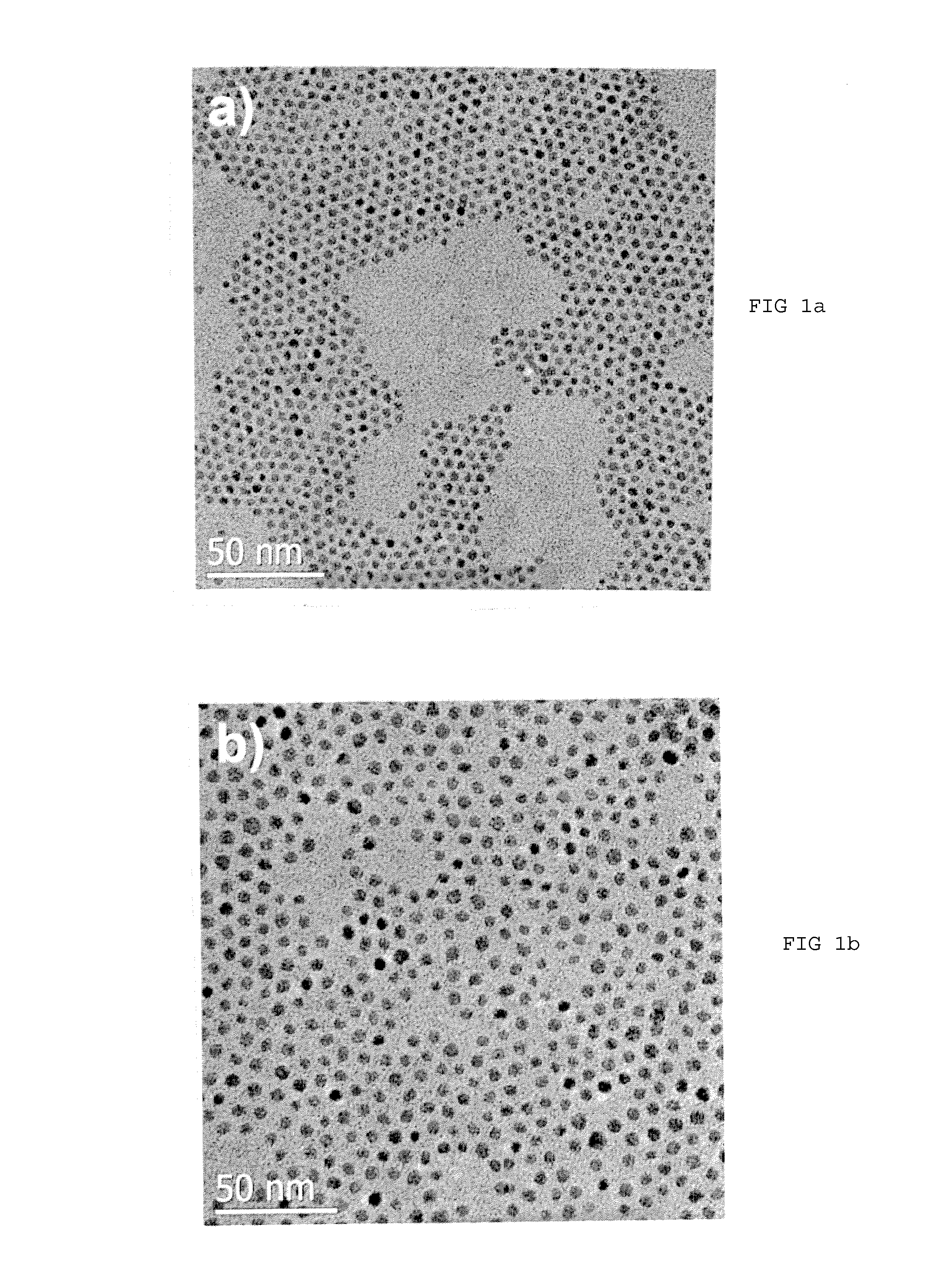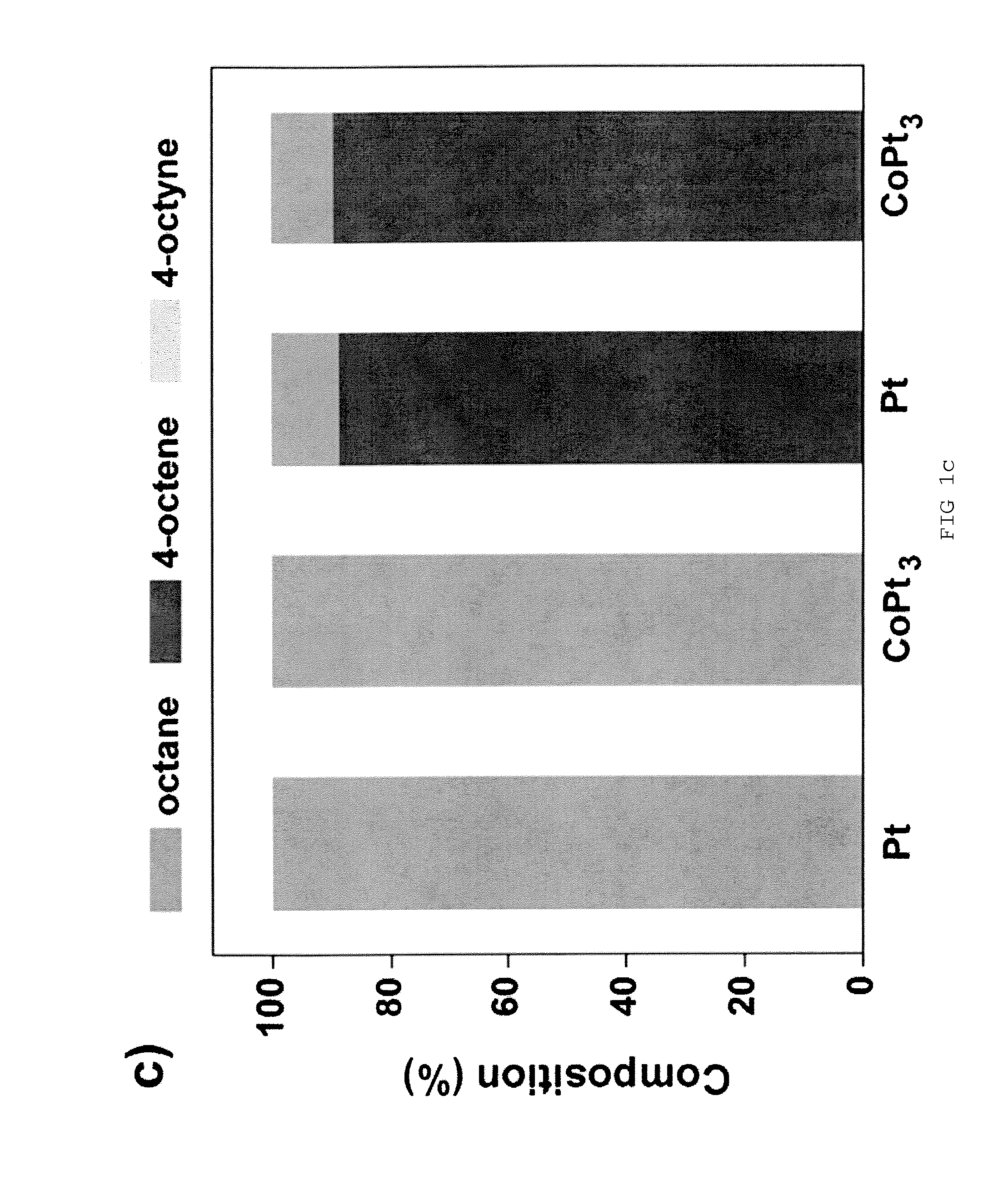Surface modification of catalystic surface by organic molecules and metal cations for selective catalysis
a surface modification and catalyst technology, applied in the direction of organic compounds/hydrides/coordination complexes, metal/metal-oxides/metal-hydroxide catalysts, physical/chemical process catalysts, etc., can solve the problems of eventual competition between octenes, low conversion of alkynes, and decrease in binding energy of octenes, so as to increase the selectivity of alkene, increase the coverage of primary alkylamines, and reduce the binding energy of octen
- Summary
- Abstract
- Description
- Claims
- Application Information
AI Technical Summary
Benefits of technology
Problems solved by technology
Method used
Image
Examples
example i
Methodological Details
Synthesis of NPs
[0029]The synthesis of Pt NPs was carried out by a method described in conventional prior art with minor modification. A reaction mixture was prepared by adding 0.2 g of Pt(acac)2, 0.89 g of oleic acid, and 0.81 g of oleylamine into 10 mL of 1-octadecene. It was degassed at 100° C. for 20 min and heated at 120° C. for 30 min under nitrogen atmosphere to form a clear yellow solution. It was further heated to 200° C. at the rate of 4° C. min and then kept at that temperature for 30 min. After the reaction was stopped, Pt NPs were separated and washed with excess acetone two times. CoPt3, NPs were synthesized using conventional well-known methodologies.
example ii
Catalytic Studies
[0030]The hydrogenation reaction was carried out in a stainless steel reactor at room temperature for 3 h under H2 atmosphere (200 psig). In a standard condition, the reaction solution was prepared by dispersing Pt nanoparticles in 1.0 mL dodecane containing 3.75 wt % (255 mM) of 4-octyne. The amount of Pt in the solution was controlled in the range of 0.4-0.6 mg, which was confirmed by inductively coupled plasma (ICP) analysis. [Pt]surf is defined as the concentration of Pt atoms at the surface of Pt NPs in the solution. The value of [Pt]surf is calculated based on the net amount of Pt atoms in the solution and the size of Pt NPs from TEM. During the reaction, the solution was stirred at about 7000 rpm. After the reaction, the solutions were purged with nitrogen to remove any residual hydrogen. Otherwise stated, the concentration of amine in the reaction solution was controlled by adding 1-octylamine. On the basis of the composition data from the reaction product, ...
example iii
Characterization
[0031]Samples for transmission electron microscopy (TEM) were prepared by dropping and drying of 1-2 pL of toluene solution of NPs on a carbon-coated copper grid (Ted Pella). TEM measurements were performed using a JEOL 2100F microscope operated at 200 kV. Thermogravimetric analysis was carried out using a Mettler Toledo TGA / SDTA851e instrument. The sample was heated from 25 to 600° C. at the heating rate of 3° C. / min. The composition of the solution after hydrogenation reaction was analyzed by gas chromatography mass spectrometry (GC-MS) instrument composed of an Agilent 6890 GC system and a 5973 Network Selective Detector.
PUM
| Property | Measurement | Unit |
|---|---|---|
| length | aaaaa | aaaaa |
| temperature | aaaaa | aaaaa |
| hydrogenation reaction rate | aaaaa | aaaaa |
Abstract
Description
Claims
Application Information
 Login to View More
Login to View More - R&D
- Intellectual Property
- Life Sciences
- Materials
- Tech Scout
- Unparalleled Data Quality
- Higher Quality Content
- 60% Fewer Hallucinations
Browse by: Latest US Patents, China's latest patents, Technical Efficacy Thesaurus, Application Domain, Technology Topic, Popular Technical Reports.
© 2025 PatSnap. All rights reserved.Legal|Privacy policy|Modern Slavery Act Transparency Statement|Sitemap|About US| Contact US: help@patsnap.com



